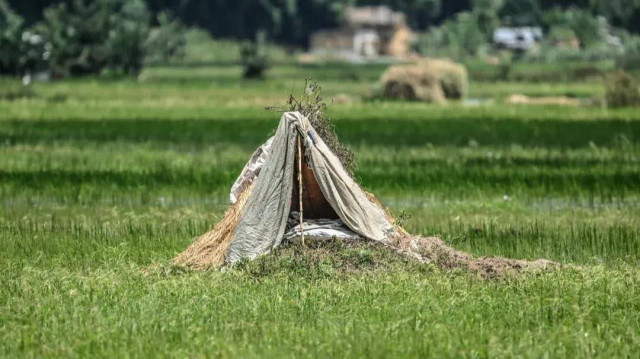
In the image above, you see a tent. I came across this tent in the Antananarivo region of Madagascar and immediately felt the urge to document it. What I felt and sensed in the area led me to ask a number of questions. I decided to pursue these questions further: What was this tent doing in Madagascar?
If you look closely, you’ll notice sheets, fabric, and a pillow inside. Most likely, these are there for the comfort of the person staying in the tent someone probably involved in livestock herding. The tent itself is simple, primitive, and portable. It appears handmade and not technically difficult to construct. From a distance, it seemed small, but once I approached, I realised a person could actually fit inside. The surrounding area is quite green and suitable for grazing. It also appears to be near a rice field.
As my suspicions and questions grew, so did my excitement. I couldn’t find the tent’s owner, nor were there any small livestock around. When I asked the locals, they told me that there are nomads in the southern parts of Madagascar who are engaged in small scale livestock herding.
The question forming in my mind was this: Was the person using this tent just an ordinary shepherd, or was he a nomad? To answer that, I needed to ask the locals and that’s exactly what I did. They told me it was a nomad’s tent. Most likely, the person was semi-nomadic, a shepherd who also practiced animal farming.
However, the concept of nomadism is not something easily explained by the local people. Just because they say someone is a nomad doesn’t necessarily mean he is a full nomad. After all, it is extremely difficult for a true nomad to travel entirely alone. The unfortunate part is that I couldn’t interview the tent’s owner. But then again, emotions have no place or significance in scientific studies...
The philosophy of nomadism a deeply ancient way of life was rooted in meeting basic, primal needs. Eating, drinking, shelter, and survival were central. Among these, shelter was especially important, and nomads provided this for themselves using tents. Each nation and ethnic group had its own unique tent design. These tents were typically portable, to allow for easy migration from place to place.
There are various types of nomadic tents, their size and structure depending on specific needs. Even today, nomadism, one of the oldest lifestyle’s in human history continues to exist, but practiced by very few. But yes, even in Africa, you can still come across them.
Enes ŞAHİN
Researcher in GZT







